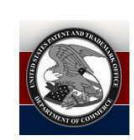Newsletter Issue 15 - May, 2010
In this issue:
Can I freely distribute a news
article?.
Patent reform Lite.
Registering trademarks for scents, color and sound.
International piracy.
Patent Prosecution Highway
Ask Dr. Copyright: Can I freely distribute current news articles?
by Lawrence Husick
Dear Dr. ©:
In old movies, the newsboys (newsyoungpersons now?) are always standing in the street (don't their parents know that they could be hit by a horsecart?) yelling, "Extree! Extree! Read All About It!" and waving some yellow rag in the air. I remember hearing that facts in news stories can't be copyrighted, but that some news is protected by the law. On occasion, I read a news article on the Internet and I'd like others in my company to know about it. I could just forward the link, but then they'd have to click on it, and by the time they got around to it, the link might have changed. Can I just send the article to my friends, or is that somehow illegal?
Signed,
Fit to be Printed
Dear Fit:
You are, of course, referring to the so-called "hot news" doctrine. This legal rule, created by judges, is not a part of the copyright act (17 U.S.C. §101 et seq.) but rather, is a rule of "equity". This means that courts have the power to redress unfair situations even though the law does not expressly provide a remedy. When a news organization invests the "sweat of the brow" (give me a break, judges talked like that back then) then another person will not be allowed a "free ride" (they had steam trains and hobos, too, so they said things like this) by republishing what it took so much work to gather in the first place. This doctrine was first expressed in International News Service v. Associated Press,248 U.S. 215 (1918). In that case, the Supreme Court said that although members of the public could repeat news items, competing wire services could not, at least until the "commercial value as news...has passed away" (old news is, I guess, "olds".)
This doctrine has been adopted in a number of states, but New York (where lots of publishing goes on) is the leader. In National Basketball Assoc. v. Motorola, 105 F.3d 841 (2d Cir. 1996) the Court said that hot news is protectable if it is gathered at some cost, is time-sensitive, that the second user competes with the gatherer, and if the free-riding reduces the incentive of the gatherer to produce the news or to maintain its quality.
Recently, in Barclay's Capital v. TheFlyOnTheWall.com, a New York court indicated that to protect its hot news, the originator might have to prove that it actively "policed" its content, by going after those who republished it. The court seemed to think that it may not be fair for the original publisher to be able to sue some users of its product, while winking at others. This is the first time that the concept of policing, which is common in trademark cases, has been used in a hot news context.
And so, dear Fit,
you have your answer: As long as you're not in business competing
with those from whom you copy your hot news, you're free to
republish. Should you go into business, it may be a different
story, and the "Doc" looks forward to hearing from you when you get
sued.
Patent Reform Lite
by Robert J. Yarbrough
Reps. John Conyers (D - Michigan) and Lamar Smith (R - Texas), the chairman and ranking Republican on the House Judiciary Committee, are trying to resolve the problems of patent pendency and the current revenue shortfall at the United States Patent and Trademark Office ("PTO"). "Pendency" is the time from filing a patent application until the time of receiving the first office action. The last time we checked, the average pendency was 29 months and rising. This long delay in reviewing patent applications is tied to the large number of applications filed every year, inadequate PTO information technology resources, inadequate numbers of experienced patent examiners and turnover in the examiner corps. As with all things, many of these problems can be resolved by money.
The "Patent and Trademark Office Funding Stabilization Act of 2010", introduced on May 18, 2010 addresses the revenue issues by (a) giving fee-setting authority to the PTO and (b) by preventing Congress from diverting patent fees. The PTO would have authority to set fees to cover its costs and to keep those fees in a revolving account until the monies are expended. The fees collected by the PTO would be off limits to Congress. The bill would create a temporary 15% surcharge on PTO fees to counter the current revenue shortfall due to the drop in patent filings. The bill also would create a new category of applicant - the "micro entity," which would be entitled to a 75% discount in filing and certain other fees.
The power of the purse is a major management tool of Congress. In the past, Congress has been loath to allow any agency to control its own funding. One danger in giving an agency control of its own funding is that the agency is a monopoly that has no incentive to control its own costs. The bill includes several management and oversight tools to prevent the PTO from running amok with excess fees. The provisions of the bill are relatively non-controversial; however, passage of the funding bill will remove a reason for moving forward with the larger Patent Reform Act of 2009.
Is that a trademark that I smell?
by Deborah A. Logan
Though unusual, United States trademark law does permit registration of scents, colors and sounds.
Scents are protectable as trademarks only if they are used in a "non-functional" manner. For example, a perfume scent is considered functional and would not be registrable since perfume is sold mainly for its fragrance. Scent marks are rare and were only recently recognized in 1990, when a California woman registered a scent for her sewing thread and embroidery yarn. The trademark is described as a "high impact, floral fragrance reminiscent of plumeria blossoms".
Color trademarks contain one or more colors used on a product. For example, the PTO granted Owens-Corning a trademark registration for the color pink when used in association with fiberglass insulation. A color mark holder may only claim exclusive rights to use of the color in connection with a specific product or packaging. For example, it has been determined that the use of blue packaging for sugar is an infringement of NutraSweet Company's trade dress for its product, Equal, a sugar substitute.
Sound marks may consist of a series of musical notes with or without words or lyrics accompanied by music. A classic example is the lion roar that identifies motion pictures made by Metro-Goldwyn-Mayer. Another familiar sound mark is the series of musical chimes used to identify National Broadcast Company programming.
Generally, it is more difficult to obtain registration of a color, scent or sound. The trademark applicant has the burden of demonstrating that its mark is first, a non-functional part of the product it identifies and, second, that mark identifies the source of the product. Thus, while marks related to smells, colors and sounds are unconventional, they do exist.
International Piracy Makes Headlines
by Adam Garson
In 2003, then Senator Joe Biden and three other Congressmen
formed the Congressional International
Anti-Piracy Caucus. In an
invitation to Congress, the Caucus wrote that "Our bipartisan Caucus
will work to support congressional efforts to deal with the problem
of piracy and Administration efforts to obtain strong intellectual
property protections in the context of international trade
agreements." At the time, as it still is, the focus was on
film and music piracy.
On May 19, 2010, the Caucus unveiled the "2010 International Piracy Watch List." In the announcement, the Caucus raised warnings in connection with several countries where piracy has reached alarming levels, in particular, China, Russia, Canada, Spain, and Mexico. In addition, the Caucus listed certain problem websites that provide access to unauthorized copies of copyrighted works made by U.S. creators: China's Baidu, Canada's IsoHunt, Ukraine's mp3fiesta, Germany's RapidShare, Luxembourg's RMX4U and Sweden's The Pirate Bay were identified as priority sites. According to the report, these sites are among the most heavily visited websites in the world. The list is very similar to the annual report prepared by the Office of the United States Trade Representative, entitled the "2010 Special 301 Report."
The official response from the Chinese government was predictable. It wrote, "The Chinese Government attaches great importance to the protection of intellectual property rights and has made it a national strategy. Continuous efforts have been made to enhance the system and institution-building of intellectual property rights . . . Relevant U.S. legislators should respect the fact and stop making groundless accusations of China."
Canadian scholars were incensed at being grouped with China and Russia as the worst places on earth for intellectual property law. Michael Geist, a professor at University of Ottawa law school, blasted the 301 Report, "In regard to the watch list, Canada does not recognize the 301 watch list process. It basically lacks reliable and objective analysis. It's driven entirely by U.S. industry. We have repeatedly raised this issue of the lack of objective analysis in the 301 watch list process with our U.S. counterparts." He stated "the embarrassment is not Canadian law. Rather, the embarrassment falls on the U.S. for promoting this bullying exercise and on the Canadian copyright lobby groups who seemingly welcome the chance to criticize their own country."
The response from the Canadian government was more subdued. According to the AFP, Prime Minister Stephen Harper's Conservative government twice tried to strengthen Canada's current copyright legislation in 2007 and 2008, but both times the bills failed to be passed by parliament.
Strong copyright protection will ultimately be determined by a combination of strong legislation and enforcement, not by posturing and bickering. It remains to be seen whether China or Canada (or the other countries) will act to reduce the tide of piracy in a meaningful way.Patent Prosecution Highway
by Robert J. Yarbrough
Our economy is global and an
invention that is valuable in the U.S.
likely is valuable in other countries as well.
The Patent Prosecution Highway allows for expedited review of
corresponding foreign patent applications upon the allowance of a
U.S. patent application. If a patent applicant receives a decision
from the U.S. PTO that at least one claim of a patent application is
allowable, then the applicant can request any of several foreign
patent offices to 'fast track' the corresponding claims of a pending
application in the foreign patent office.
Several countries participate in the Patent Prosecution Highway program, including the United States, the European Patent Office, Canada, Australia, the United Kingdom, Germany, Japan, Korea, Denmark, Finland and Singapore. The Patent Prosecution Highway works both ways - an application having at least one allowed claim in any of these foreign patent offices is entitled to 'fast track' review by the U.S. PTO.

